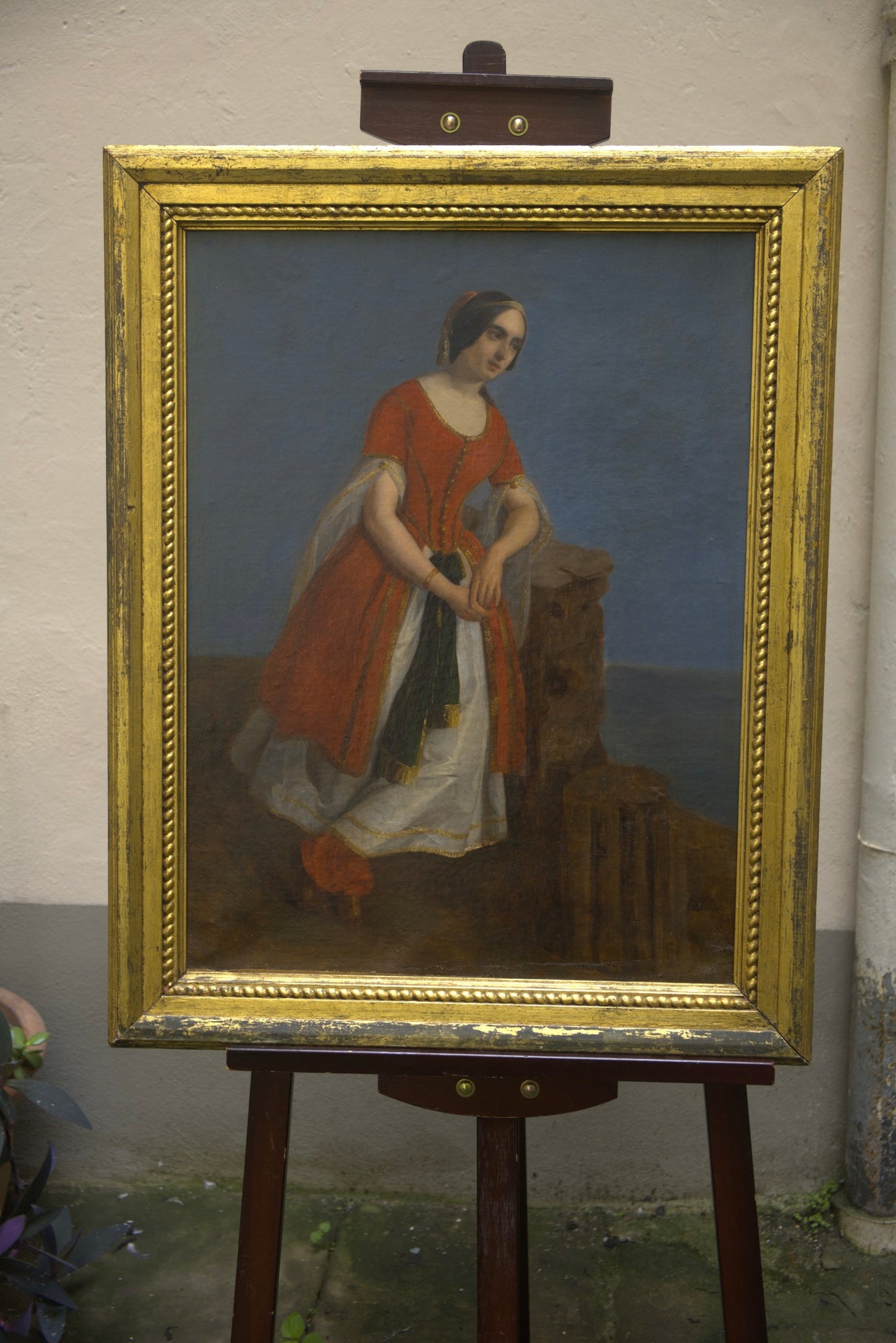@alina.malova
Romantic Portrait of a Woman in Oriental Dress among Greek Ruins, ca. 1840
Romantic Portrait of a Woman in Oriental Dress among Greek Ruins, ca. 1840
Couldn't load pickup availability
Female Figure in Oriental Dress among the Ruins of Romantic Greece
Oil on canvas, 61 × 46 cm (without frame), 74 × 57 cm (with frame)
Early to mid-19th century
A young woman stands among classical ruins, dressed in an oriental-inspired costume with a gold-tasseled headdress, sheer sleeves, and pointed shoes. Her graceful posture, poised between theatricality and melancholy, evokes the romantic fascination with the East and the lost grandeur of ancient Greece.
The work belongs to the climate of Philhellenism, a cultural movement that spread across 19th-century Europe in support of the Greek struggle against the Ottoman Empire.
Medora — beautiful and sorrowful, among natural ruins and engraved memories — closely resembles the mood of this painting, echoing the gestures of longing and solitude found in Byron’s heroines gazing toward the sea. Likewise, Haidée, the young Greek from Don Juan, embodying sweetness and ideal freedom, seems reflected in this vision of romantic melancholy and imagined escape.
The presence of a wedding ring on the woman’s hand, however, suggests that this may not be a purely allegorical figure but rather a real portrait. It could, in a plausible hypothesis, represent Giuseppina Turrisi Colonna (Palermo, 1822–1848), a prominent Italian poet and intellectual. A young woman of letters and the stage, she shared with her husband, Giuseppe De Spuches — a Hellenist and admirer of Byron — a deep passion for Greek culture and romantic literature. The costume could thus allude to a theatrical performance or literary impersonation of a Byronic heroine within a philhellenic and artistic context.
In this sense, the composition recalls the allegorical model established by Delacroix, where the oriental woman among ruins became an emblem of Greece herself. During the 1820s and 1830s, numerous artists adopted this visual language, following Delacroix’s celebrated Greece on the Ruins of Missolonghi (1826), painted as a tribute to Byron, who had died in Missolonghi in 1824. In Paris, several “Exhibitions for the Benefit of the Greeks” presented both historical scenes from the Greek War of Independence and subjects drawn from Byron’s poetry, underscoring the inseparable bond between Romanticism and the philhellenic ideal.
Relined canvas, in good condition.
Materials
Materials
Dimensions
Dimensions
Care information
Care information























Image with text
Pair text with an image to focus on your chosen product, collection, or blog post. Add details on availability, style, or even provide a review.






















